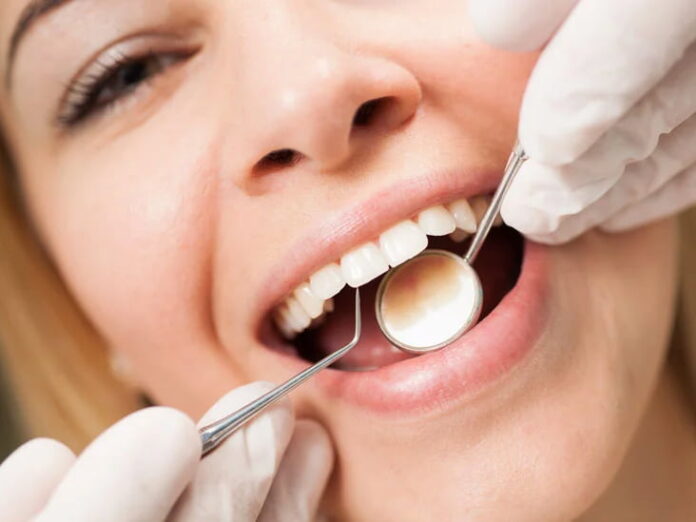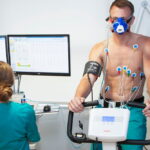Maintaining good oral hygiene is essential for a healthy smile. Regular dental cleanings are vital in achieving and preserving optimal oral health. However, many individuals may not be aware of the various dental cleaning alternatives available to them. This article will explore the different types of dental cleanings, their benefits, and how they contribute to keeping your teeth sparkling.
Prophylaxis Cleaning:
Prophylaxis cleaning, commonly known as routine dental cleaning, is the most common type. It is typically performed every six months to maintain oral health and prevent dental issues. During a prophylaxis cleaning, a dental hygienist removes plaque and tartar build-up from the teeth using special tools. They also polish the teeth to remove surface stains and create a smooth, shiny surface. Prophylaxis cleanings are essential for preventing gum disease and cavities and maintaining fresh breath.
Regular prophylaxis cleanings are recommended for most individuals as part of their oral hygiene routine. By removing plaque and tartar, prophylaxis cleanings help prevent the formation of cavities and gum disease. Additionally, the polishing step helps remove surface stains caused by coffee, tea, tobacco, and other factors. The result is a clean, sparkling smile contributes to overall dental health.
Deep Cleaning (Scaling and Root Planing):
Deep cleaning, also known as scaling and root planing, is a more intensive dental cleaning procedure. It is usually recommended for individuals with advanced gum disease, known as periodontitis. Deep cleaning involves two main steps: scaling and root planing. Scaling involves removing plaque and tartar from the tooth surface and below the gum line. Root planing focuses on smoothing out rough spots on the tooth roots to prevent bacteria accumulation and promote gum tissue healing.
Periodontitis is a severe condition that can lead to tooth loss if left untreated. Deep cleaning is an effective treatment for managing and controlling gum disease. By removing the accumulated plaque and tartar, deep cleaning helps reduce gum inflammation, eliminate infection-causing bacteria, and prevent further progression of gum disease. This type of cleaning may require multiple visits and local anesthesia to ensure comfort during the procedure.
Air Abrasion Cleaning:
Air abrasion is a modern dental cleaning technique that combines air pressure and fine particles to remove stains, plaque, and minor tooth decay. Instead of traditional scraping tools, a high-powered stream of air and particles is directed at the teeth to gently and effectively remove debris. Air abrasion is a minimally invasive procedure often used for individuals sensitive to traditional cleaning methods or who prefer a less invasive approach. It is also helpful in removing surface stains caused by certain foods, beverages, and tobacco use.
Air abrasion cleaning offers a gentle and comfortable alternative to traditional dental cleaning methods. The precise stream of air and particles can effectively remove stains and plaque without causing discomfort or damage to the tooth structure. This technique is particularly beneficial for individuals with sensitive teeth or those who experience anxiety during dental procedures.
Ultrasonic Cleaning:
Ultrasonic cleaning is another advanced dental method using ultrasonic vibrations to remove plaque and tartar. A specialized instrument called an ultrasonic scaler is used, which produces rapid vibrations and a gentle water spray to break down and remove stubborn deposits. This technique effectively reaches areas that are difficult to access with traditional cleaning tools. Ultrasonic cleaning is efficient, comfortable, and often preferred by patients with sensitive teeth or a low tolerance for scraping.
Ultrasonic cleaning offers several advantages over traditional cleaning methods. The high-frequency vibrations generated by the ultrasonic scaler disrupt plaque and tartar, making removing it easier. The gentle water spray helps to flush away the debris, providing a thorough and comfortable cleaning experience. The ultrasonic scaler’s tip can also reach deep into periodontal pockets, promoting gum health and reducing the risk of gum disease. Ultrasonic cleaning is an effective and efficient alternative for maintaining oral hygiene.
Laser Cleaning:
Laser cleaning is a cutting-edge dental technique that utilizes laser technology to remove plaque, tartar, and bacteria from the teeth and gums. The laser energy effectively vaporizes unwanted deposits without causing discomfort or damaging healthy tissue. Laser cleaning is precise, minimally invasive, and promotes faster healing than traditional cleaning methods. It is often used with other dental procedures and can contribute to a healthier and brighter smile.
Laser cleaning offers several benefits to patients. The laser’s precision allows targeted treatment, minimizing the impact on surrounding healthy tissue. The procedure is generally painless, reducing the need for anesthesia. The laser energy also has a bactericidal effect, helping to eliminate harmful bacteria and reduce the risk of infection. Moreover, laser cleaning stimulates gum tissue regeneration, improving gum health and oral well-being.
Natural Cleaning Alternatives:
Apart from professional dental cleanings, there are also natural cleaning alternatives that can help maintain oral health. These include oil pulling, which involves swishing a tablespoon of oil (such as coconut oil) in your mouth for about 20 minutes to reduce plaque and bacteria. Additionally, certain foods like apples, carrots, and celery act as natural cleansers by stimulating saliva production and mechanically cleaning the teeth.
While natural cleaning alternatives can complement regular dental cleanings, it’s important to note that they should not replace professional dental care. Professional cleanings are necessary to remove hardened plaque (tartar) and address specific dental issues effectively. Natural cleaning methods can be supplementary measures to promote oral hygiene between dental visits.
Related Article: https://www.grovecitycenterfordentistry.com/blog/what-are-the-different-types-of-dental-cleaning/
Conclusion
Maintaining regular dental cleanings is crucial for achieving and preserving a sparkling smile. Various alternatives are available to suit individual needs, from prophylaxis cleanings to deep cleanings and innovative techniques like air abrasion, ultrasonic cleaning, and laser cleaning. Consulting with your dentist will help determine the most suitable cleaning method based on your oral health condition and personal preferences. Remember, a healthy and radiant smile starts with proper dental care and regular dental cleanings. This dentist in Paramus also adds that you should brush and floss your teeth every day to prevent plaques from building up.
Eat well, get plenty of exercise, and live a generally healthy lifestyle to keep your testosterone levels where they should be.
Read Also
- Modern Approaches to Adolescent Mental Health Treatment for Lasting RecoveryWith increasing numbers of teens experiencing emotional and behavioral health concerns, adolescent mental health treatment has become more essential than ever. Conditions such as anxiety, depression, trauma and mood instability are on the rise, and effective support must evolve with these growing needs. Today’s treatment models blend evidence-based therapy with flexible access and holistic care, giving… Read more: Modern Approaches to Adolescent Mental Health Treatment for Lasting Recovery
- How to Find a 5-Star Dentist Near YouChoosing a dentist is more than just finding someone who can clean your teeth. It’s about selecting a trusted partner in your long-term oral health. A 5-star dentist not only provides excellent clinical care but also delivers a positive patient experience, from the moment you walk in until the moment you leave. Whether you’re new… Read more: How to Find a 5-Star Dentist Near You
- Your Easy-Peasy Guide to Brewing Amazing MatchaHey there! So, you’ve heard all the buzz about matcha – that vibrant green powder that’s not just pretty but packed with good stuff? It can seem a little fancy and intimidating at first, but trust me, making a delicious cup at home is simpler than you think. Forget complicated ceremonies for now; let’s just… Read more: Your Easy-Peasy Guide to Brewing Amazing Matcha
- Embracing Holistic Wellness: Insights from a Lansing, MI Health CenterReframing Health: Moving Beyond Symptom Management Treating only symptoms often offers quick relief, yet long-term results stay out of reach. When care zeroes in on isolated complaints, the bigger picture, such as stress, behavior, or lifestyle, often gets missed. Research shows that whole-person care, which looks at physical, emotional, and environmental factors, yields better outcomes… Read more: Embracing Holistic Wellness: Insights from a Lansing, MI Health Center
- VO₂ Max Testing Explained: What It Is & Why It Matters for Your HealthVO₂ max sounds like a term reserved for elite athletes, but it’s among the most accurate measures of your lifetime and general condition. Moreover, it goes beyond performance. Monitoring your VO₂ max will help you to ascertain your body’s capacity to control stress, its oxygen consumption efficiency, and your internal ageing process. If you have… Read more: VO₂ Max Testing Explained: What It Is & Why It Matters for Your Health
- So, what exactly is matcha?Think of matcha as green tea turned up to eleven! Instead of steeping leaves and tossing them out, matcha is made by grinding whole green tea leaves into this super-fine, vibrant green powder. You whisk it right into hot water (or milk!), meaning you’re drinking the entire leaf. That’s why folks say you get way… Read more: So, what exactly is matcha?







